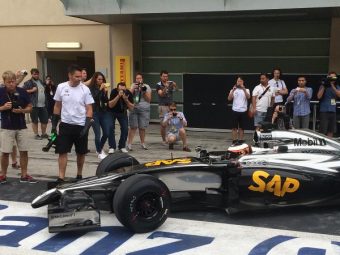The gender disparity between female astronauts and female Formula 1 drivers is striking. A noteworthy 73 female astronauts have ventured into space, while a mere five women have participated in Formula One Grand Prix races. Formula One was founded in 1950, and NASA was established in 1958. Indeed, competitive motor racing is even older, with the first open-wheel racing competitions starting as early as the 1920s. So, the question arises: why is there a significant disconnect between space exploration and Formula One?
Space exploration represents the epitome of human endeavour, pushing the boundaries of physical and psychological capabilities. It demands the expertise of top-notch engineers and scientists who undergo rigorous training to become astronauts. In many respects, space exploration is more challenging and extreme than Formula One, requiring unparalleled dedication and skill.
Nevertheless, Formula One undeniably grapples with a notable issue concerning the participation of women in the sport.
The FIA attempted to address this issue by segregating women into a separate category, creating a female-only open-wheel series. This move enables the predominantly male-dominated FIA to wield the equality card, creating an illusion of breaking down barriers. However, in reality, the wall is only being constructed higher. The existence of a female-only open-wheel racing series should not be deemed acceptable; it serves as an acknowledgement of inequality and a failure to effectively address the pervasive issue.
At times, the gates to these barriers are opened to permit a chosen few women to drive an F1 car. In 2023, Aston Martin granted Jessica Hawkins the opportunity to test the AMR21 at the Hungaroring. However, this occurrence does not signify substantial progress, as Hawkins, a former British karting champion, was the first woman in five years to drive an F1 car in anger. Her role, perhaps not known to her, was designed to enhance Aston Martin’s sales and marketing initiatives, given that the DBX SUV primarily targets women.
Formula One teams are also complicit in this apartheid, oppressing female drivers by relegating them to the background and presenting them to the media only when it aligns with their PR agenda. There is resistance to the blatant oppression, Lewis Hamilton stands as the lone high-profile individual who acknowledges the discrimination women encounter in Formula One and openly speaks out against it.
However, equality remains absent in F1, contrary to what the bastards at the FIA may want you to think; there is only a manifestation of pragmatic sexism. It shouldn’t be deemed necessary to commemorate a woman testing an F1 car every five years; instead, the absence of female F1 drivers should be viewed as a source of embarrassment. The disconnect persists among F1 teams and the FIA, highlighting the need for substantial change.
Note:
The main banner image was captured on September 9, 2012, and shows NASA Flight Engineer Sunita Williams during a six-hour spacewalk carrying out repairs on the International Space Station.








